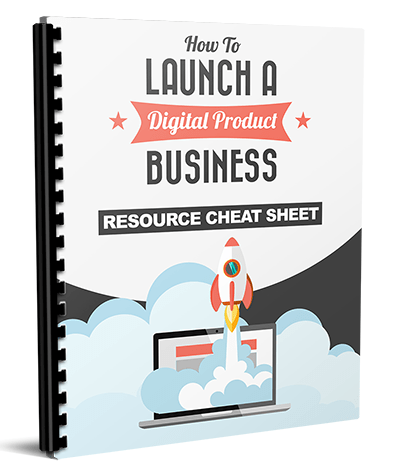Are you looking to generate passive income and take your digital adventure to the next level? Learning how to create a digital product might just be the game-changer you need. In this comprehensive guide, we’ll walk you through the process of creating a digital product from scratch, sharing valuable insights and resources along the way.
Table of Contents

How to Create a Digital Product
Why Create Your Own Digital Product?
When you embark on the journey of learning how to create a digital product, you gain complete control over its features, pricing, and marketing strategies. This allows you to adapt quickly to market trends and customer demands, giving you a competitive edge in the digital marketplace.
One of the most significant advantages of learning how to create a digital product is scalability. Unlike physical products, digital products can be sold repeatedly without incurring additional production costs. This means that once you’ve created your product, you can maximize your profit margins by reaching a wider audience.
The Benefits of Owning Your Own Digital Product
High Profit Margins
Digital products often boast higher profit margins compared to physical goods, as there are no inventory or shipping costs involved. When you learn how to create a digital product, you can enjoy these high profit margins and build a sustainable income stream.
Global Reach
Learning how to create a digital product allows you to break down geographical barriers and reach a global audience. With the power of the internet, you can sell your product to anyone, anywhere, at any time, expanding your customer base and increasing your revenue potential.
Passive Income
One of the most attractive aspects of learning how to create a digital product is the potential for passive income. Once your product is created and marketed effectively, it can generate consistent income with minimal ongoing effort, allowing you to focus on other aspects of your business or personal life.
Types of Digital Products
E-books and PDFs
E-books and PDFs are popular choices for those learning how to create a digital product. They are ideal for sharing knowledge, expertise, or stories in a format that is easy to create and distribute. Many people start their digital product journey with e-books and PDFs, as they require minimal technical skills and can be created using common word processors or design tools.
Online Courses
If you have in-depth knowledge or skills in a particular subject, creating an online course can be a lucrative way to learn how to create a digital product. Platforms like Teachable and Udemy make it easy to set up and sell your course, providing you with the tools and resources you need to deliver a high-quality learning experience to your students.
Software and Tools
For those with programming skills, developing software or tools can be a powerful way to learn how to create a digital product. By creating applications that solve specific problems or streamline processes, you can provide value to your customers and establish yourself as an expert in your field.

Turning Information into Products
Identify Your Expertise
The first step in learning how to create a digital product is to identify your area of expertise. Consider the skills, knowledge, or experiences that you have that others might find valuable. This could be anything from a hobby or passion to professional expertise gained through years of experience.
Create Valuable Content
Once you’ve identified your area of expertise, the next step in learning how to create a digital product is to package your knowledge into a format that is valuable and easy to understand for your target audience. This might involve creating written content, videos, audio files, or a combination of different media types.
Set Up Sales Platforms
To sell your digital product, you’ll need to set up a platform for processing payments and delivering your product to customers. Platforms like PayPal, Gumroad, and Shopify make it easy to sell digital products, with features like automatic delivery and secure payment processing.
Getting Started with Your Own Digital Product
Identify Your Niche
To create a digital product that sells, you need to identify a profitable niche. This involves researching your target audience, analyzing market demand, and identifying gaps in the market that your product can fill. By targeting a specific niche, you can create a product that addresses the unique needs and pain points of your audience.
Create Your Product
With your niche identified, it’s time to start creating your digital product. This is where the bulk of your time and effort will be spent, as you work to transform your knowledge and expertise into a valuable and engaging product. Whether you’re creating an e-book, online course, or software tool, focus on delivering high-quality content that provides real value to your customers.
For beginners, we recommend the following digital products:
Ebooks: Writing an ebook is a great way to share your knowledge or passion with others. You can create an ebook on a wide range of topics, such as self-help, cooking, personal finance, or any subject you have expertise in. Ebooks are relatively easy to create and can be sold through various online platforms.
Printables: Printables are digital files that customers can download and print at home. They can include planners, worksheets, checklists, art prints, or even coloring pages. Printables are simple to create using tools like Canva or Adobe Illustrator, and they have a low barrier to entry for beginners.
Stock Photos or Graphics: If you have a talent for photography or graphic design, you can create and sell stock photos or graphics. Many businesses and individuals are always in need of high-quality visual content for their projects. You can sell your photos or graphics on platforms like Shutterstock, iStock, or Creative Market. You can group your collection together and sell in one package on sites such as Gumroad or blackhatworld.
For more experienced people:
Online Courses: If you have valuable skills or knowledge to share, creating an online course is a fantastic digital product idea. You can create video tutorials, audio lessons, or written modules to teach others about a specific topic. Platforms like Udemy, Teachable, or Thinkific make it easy to host and sell your online courses.
Digital Templates: If you have a knack for design, creating digital templates can be a lucrative digital product. You can design templates for social media graphics, presentations, resumes, or website themes. These templates provide a starting point for users who want to create professional-looking content quickly and easily.
Lightroom Presets or Photoshop Actions: For photographers and photo enthusiasts, creating Lightroom presets or Photoshop actions can be a great digital product. These presets or actions allow users to apply specific edits or effects to their photos with just a few clicks, saving them time and effort in post-processing.
Workbooks or Guides: Similar to ebooks, creating workbooks or guides can be an excellent way to provide value to your audience. These can be interactive PDFs or fillable documents that help users learn a new skill, overcome a challenge, or achieve a specific goal.
Workbooks and guides can be focused on various topics, such as personal development, business strategy, or creative pursuits. Audio Products: If you have expertise in a particular field, consider creating audio products like podcasts, audiobooks, or guided meditations. These digital products can be consumed on-the-go and appeal to a wide audience who prefer audio content over reading or watching videos.

Set Up Sales Channels
Once your product is created, you need to set up sales channels to reach your target audience. This might involve creating a website, setting up an e-commerce store, or leveraging platforms like Gumroad or Teachable to sell your product. Make sure your sales channels are user-friendly and optimized for conversions, with clear calls-to-action and easy payment processing.
File Types for Digital Products
PDFs are a popular choice for digital products like e-books, guides, and reports. They are universally accessible and easy to create, making them a great option for those learning how to create a digital product. PDFs can be read on any device with a PDF reader, making them a versatile and user-friendly choice.
If your digital product includes video content, MP4 is the file type you’ll want to use. MP4 files are widely supported and offer good quality with manageable file sizes, making them ideal for online courses, tutorials, and other video-based products.
For digital products that include multiple files or resources, ZIP files are a convenient way to package everything together. ZIP files compress multiple files into a single, easy-to-download package, making it simple for customers to access all the resources they need in one place.
Leveraging AI to Create Digital Products
Automate Content Generation Artificial intelligence (AI) has revolutionized the way we create content, and it can be a powerful tool when learning how to create a digital product. AI-powered tools like GPT-3 can help you generate written content quickly and easily, while tools like Synthesia can create professional-looking videos from text input.
Enhance User Experience AI can also be used to enhance the user experience of your digital product. By leveraging AI-powered personalization and recommendation engines, you can tailor your product to the unique needs and preferences of each individual user, increasing engagement and satisfaction.
Data-Driven Decisions Finally, AI can help you make data-driven decisions when learning how to create a digital product. By analyzing user behavior and feedback, AI algorithms can provide valuable insights into what’s working and what’s not, allowing you to optimize your product and marketing strategies for maximum impact.
For helpful strategies to generate passive income click here.
Finding Profitable Niches
Research Market Demand
To find a profitable niche for your digital product, start by researching market demand. Use tools like Google Trends and keyword research to identify topics and keywords that are popular among your target audience. Look for areas where there is high demand but low competition, as these are often the most profitable niches.
Evaluate Competition
Once you’ve identified potential niches, take some time to evaluate the competition. Look at what other digital products are available in your chosen niche, and consider how your product can differentiate itself. Identify gaps in the market where you can provide unique value, and use this to guide your product development and marketing efforts.
Test Your Ideas
Before investing significant time and resources into creating a digital product, it’s important to test your ideas. Create a simple landing page or survey to gauge interest in your product idea, and use the feedback you receive to refine your approach. By validating your ideas early on, you can increase your chances of success when learning how to create a digital product.
Click here to find out more about selecting a niche.
The Technical Setup
Choose a Platform When learning how to create a digital product, choosing the right platform is crucial. There are many options available, each with its own strengths and weaknesses. Popular choices include Gumroad, Teachable, and Shopify, all of which offer a range of features and integrations to help you sell your digital product.
Integrate Payment Gateways To sell your digital product, you’ll need to integrate payment gateways into your sales platform. PayPal and Stripe are two of the most popular options, offering secure and reliable payment processing for digital products. Make sure to choose a payment gateway that is trusted and widely used in your target market.
Automate Delivery Finally, to streamline the sales process and provide a better customer experience, consider automating the delivery of your digital product. Many platforms offer automatic delivery options, which send the product to the customer immediately after purchase. This can save you time and effort, while also ensuring that your customers receive their product promptly.

Selling Your Digital Product
Build an Email List
One of the most effective ways to sell your digital product is to build an email list of potential customers. By offering valuable content and resources in exchange for email addresses, you can create a direct line of communication with your target audience. Use your email list to promote your product, share updates and special offers, and build relationships with your customers.
Click here on how you can drive traffic efficiently utilizing ChatGPT.
Offer Free Samples
Another effective strategy for selling your digital product is to offer free samples or previews. This can help potential customers get a taste of what your product has to offer, and can be a powerful way to build trust and credibility. Consider offering a free chapter of your e-book, a preview of your online course, or a limited version of your software tool to entice people to buy the full product.
Leverage Social Media
Finally, don’t forget to leverage the power of social media when selling your digital product. Platforms like Facebook, Twitter, and LinkedIn can be great places to reach your target audience and promote your product. Share valuable content, engage with your followers, and use paid advertising to reach even more potential customers.
How to Price a Digital Product
Now that we went through how to make a digital product, when it comes to creating and selling a digital product, one of the most crucial aspects is determining how to price a digital product effectively. Setting the right price can make a significant difference in the success of your product and your overall business. In this article, we’ll explore some key strategies and considerations to help you understand how to price a digital product optimally.
Understanding Your Target Audience
Before diving into how to price a digital product, it’s essential to have a clear understanding of your target audience. Knowing your potential customers’ needs, preferences, and willingness to pay will guide you in setting a price that aligns with their expectations. Conduct market research, analyze competitor pricing, and gather feedback from your audience to gain valuable insights into how to price a digital product that resonates with them.
Determining the Value of Your Digital Product
When considering how to price a digital product, it’s crucial to assess the value it provides to your customers. Think about the benefits, features, and unique selling points of your digital product. How does it solve a problem or meet a specific need for your target audience? The more value your product offers, the more you can justify a higher price point. Keep in mind that perceived value plays a significant role in how to price a digital product successfully.
Pricing Strategies for Digital Products
There are various pricing strategies you can employ when deciding how to price a digital product. One common approach is tiered pricing, where you offer different versions of your product at different price points. This allows customers to choose the option that best suits their needs and budget. Another strategy is value-based pricing, where you set the price based on the perceived value your product provides to the customer. Additionally, consider factors such as production costs, competitors’ pricing, and your desired profit margins when determining how to price a digital product.
Testing and Iterating
Your Pricing Finding the optimal price for your digital product often involves experimentation and iteration. Don’t be afraid to test different price points and observe how your target audience responds. Utilize A/B testing, promotional offers, and limited-time discounts to gather data on customer behavior and preferences. Regularly review and adjust your pricing strategy based on the insights you gain. Remember, figuring out how to price a digital product is an ongoing process that requires adaptability and responsiveness to market trends and customer feedback.
Balancing Accessibility and Profitability
When exploring how to price a digital product, it’s important to strike a balance between accessibility and profitability. While you want your product to be affordable and attractive to your target audience, you also need to ensure that it generates sufficient revenue to sustain and grow your business. Consider offering payment plans, subscription models, or bundled packages to make your digital product more accessible to a wider range of customers.
Final thoughts on how to create a digital product
Learning how to create a digital product can be a powerful way to generate passive income and build a sustainable business. By following the steps outlined in this guide, you can turn your knowledge and expertise into a valuable product that helps others while also providing you with financial freedom. Remember to focus on creating high-quality content, validating your ideas, and promoting your product effectively, and you’ll be well on your way to success in the world of digital products.

Frequently Asked Questions
Why should I create my own digital product?
Creating your own digital product provides control, flexibility, and scalability, along with high profit margins and global reach. Learning how to create a digital product can be a game-changer for your business.
How can I use my digital product for list building?
Offer valuable content to build a mailing list. This helps in maintaining customer relationships and promoting future products. List building is a key strategy when you know how to create a digital product.
What are the benefits of repetition in digital products?
Repetition ensures consistent messaging and builds trust with your audience, enhancing your brand’s credibility. It’s a useful tactic when you’ve learned how to create a digital product.
What are some other valuable resources or links to help me out create a digital product?
Check the below to get ideas or for resources for Creating Digital Products:
- Udemy: A platform where you can learn various skills, including how to create a digital product.
- Canva: A user-friendly graphic design tool that can help you create visually appealing digital products.
- Teachable: A platform that allows you to create and sell online courses easily.
- Gumroad: A platform that simplifies the process of selling digital products.
- You can find out more below through a step by step walk through on how you can create your first digital product:


